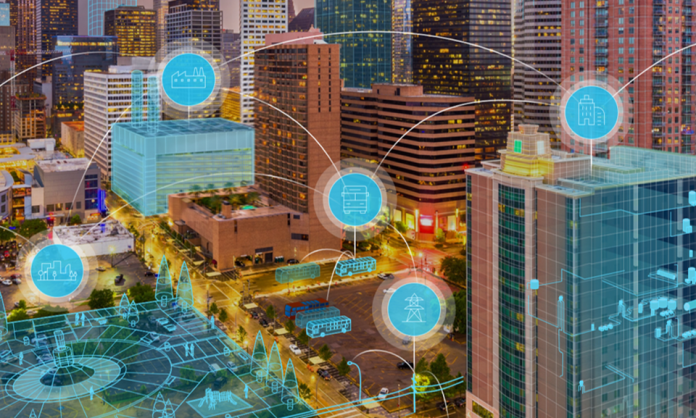Microsoft announced the rollout of a digital twin of its new regional headquarters at Frasers Tower in Singapore, in collaboration with Bentley Systems and Schneider Electric.
?The workplace of the future is about embracing innovation into the very fabric of our space, so that we create multiple touchpoints of connectivity, are intentionally inclusive and accessible, while being very mindful of sustainability and the environment. At Frasers Tower in Singapore, we worked closely with Bentley Systems and Schneider Electric to implement sensors and telemetry to create a connected workplace, that allows us to adjust the space based on usage, therefore improving energy efficiency,? said Ricky Kapur, VP for Sales, Marketing and Operations for Microsoft in Asia Pacific.
At the Microsoft offices in Frasers Tower, data is collected using a mix of 179 Bluetooth beacons in meeting rooms and 900 sensors for lighting, air quality and temperature by Schneider Electric. The platform generates nearly 2,100 data points, that are connected to the cloud on?Microsoft Azure, enabling the holistic management of the environment.
The sensors enable monitoring of facilities usage, energy and utilities, optimizing space utilization, air conditioning and lighting adjustments. Also, open technology allows activity detection enabled lighting and room sensors to reflect room bookings on the Microsoft?s Smart Building CampusLink app.
Employees and staff use Smart Building CampusLink, an application that is fully integrated with Microsoft Outlook and Microsoft Office 365, to find directions, determine room occupancy and book facilities in real-time. Built on Azure App Services and powered by Azure Data Lake and Office 365 Graph API, Microsoft?s regional headquarters in Asia Pacific is the first Microsoft office outside of Redmond, Washington to implement Smart Building CampusLink.
The sensors could potentially also monitor carbon dioxide levels in the air that negatively affect work performance and neural activity, noise levels and energy usage, which can result in savings of up to 25%, as experienced at Microsoft?s Headquarters located in Redmond, Washington.
?Smart sensors allow us to collect meaningful data in real time, which enables us to optimize various aspects of our spaces, making them more comfortable, while reducing energy consumption in a sustainable and economical manner. Our partnership with Microsoft offers a real model on how connected devices combined with contextualized sensor processing can deliver smart building systems that do not intrude on the privacy of individuals, and can be applied beyond offices, to buildings, malls and even homes of the future,? shared Damien Dhellemmes, Cluster President, Singapore, Malaysia, Brunei, Schneider Electric.
?Digital twins are redefining how we manage infrastructure, from individual equipment installations to large facilities and entire cities. While smart buildings were developed to better manage energy consumption, we have come to realize additional strategic roles of dynamically allocating space, increasing utilization, reducing costs, improving competitiveness, and enhancing collaboration and productivity. With Bentley?s OpenCities Planner and Microsoft?s Azure cloud platform and Power BI, we have developed a virtual digital twin model of their regional headquarters in Singapore, correlating the data collected across the digital and physical worlds to build domain-specific solutions and unlock new efficiencies, improvements, and opportunities for the modern workplace,? said Kaushik Chakraborty, vice president and regional executive for Asia South at Bentley Systems.

